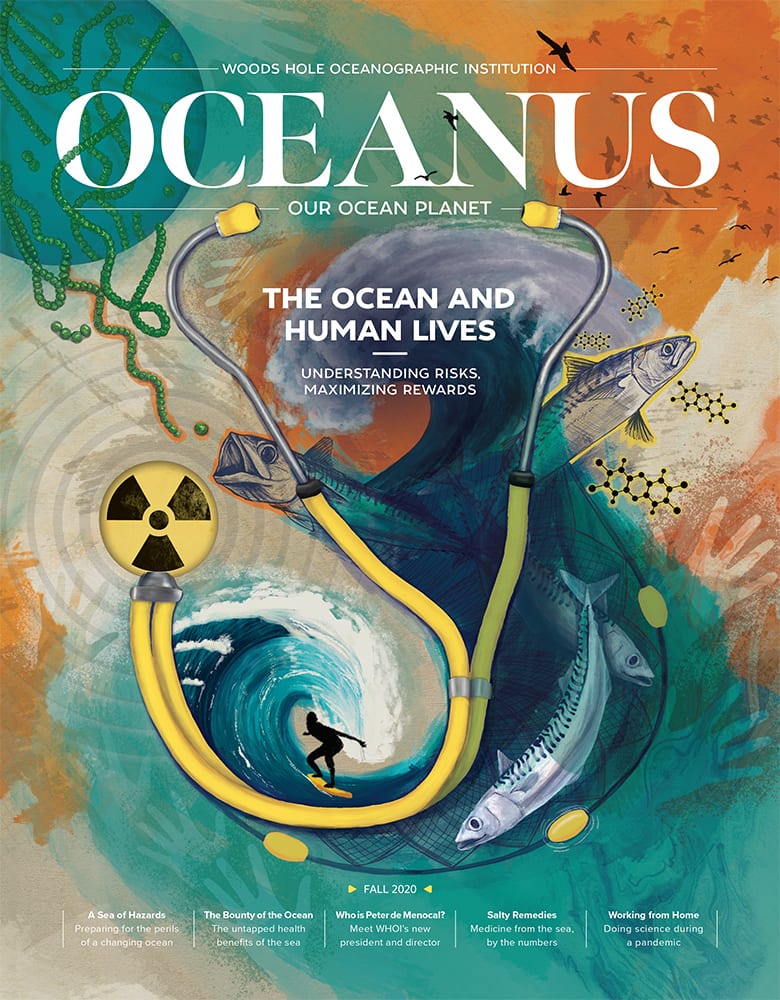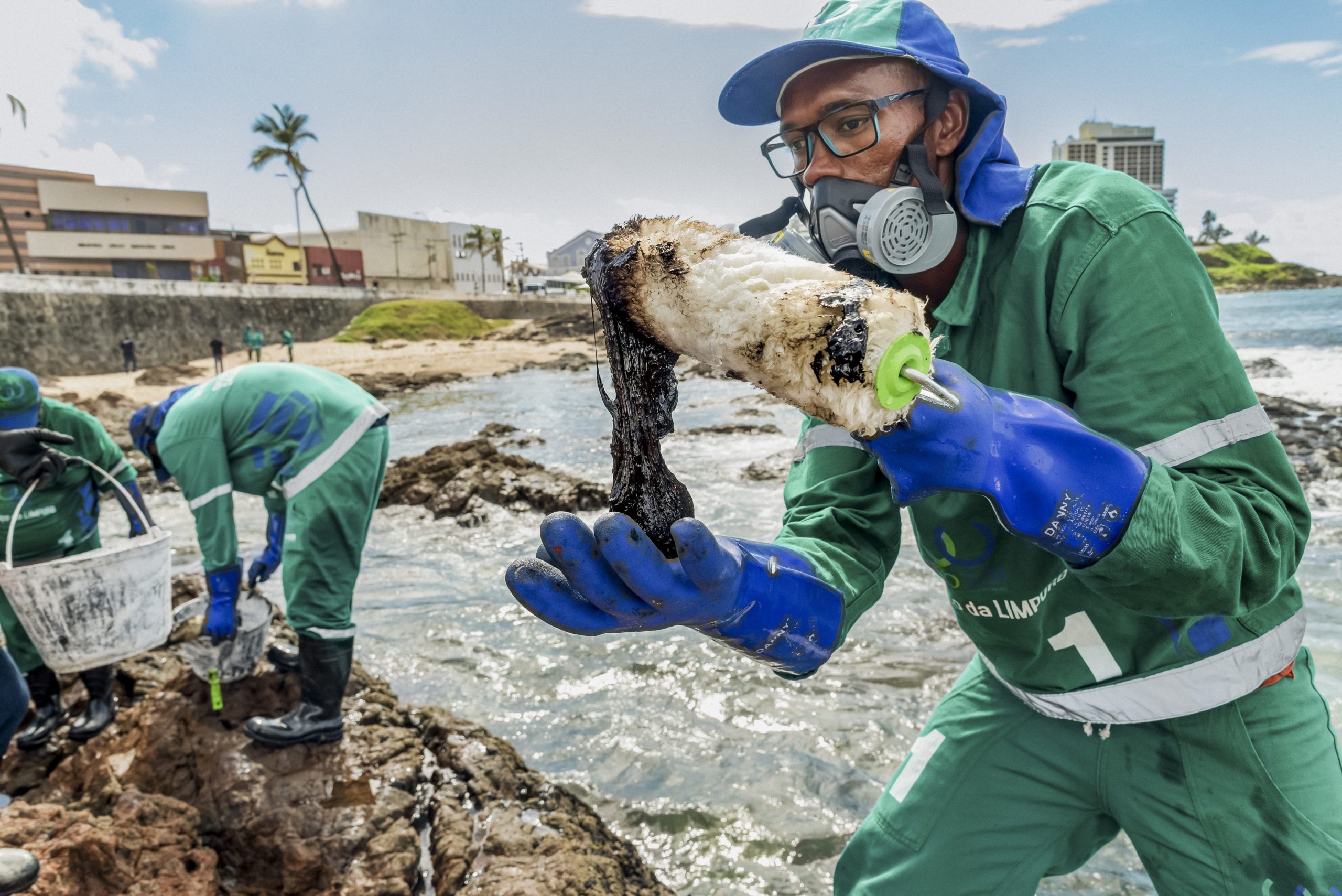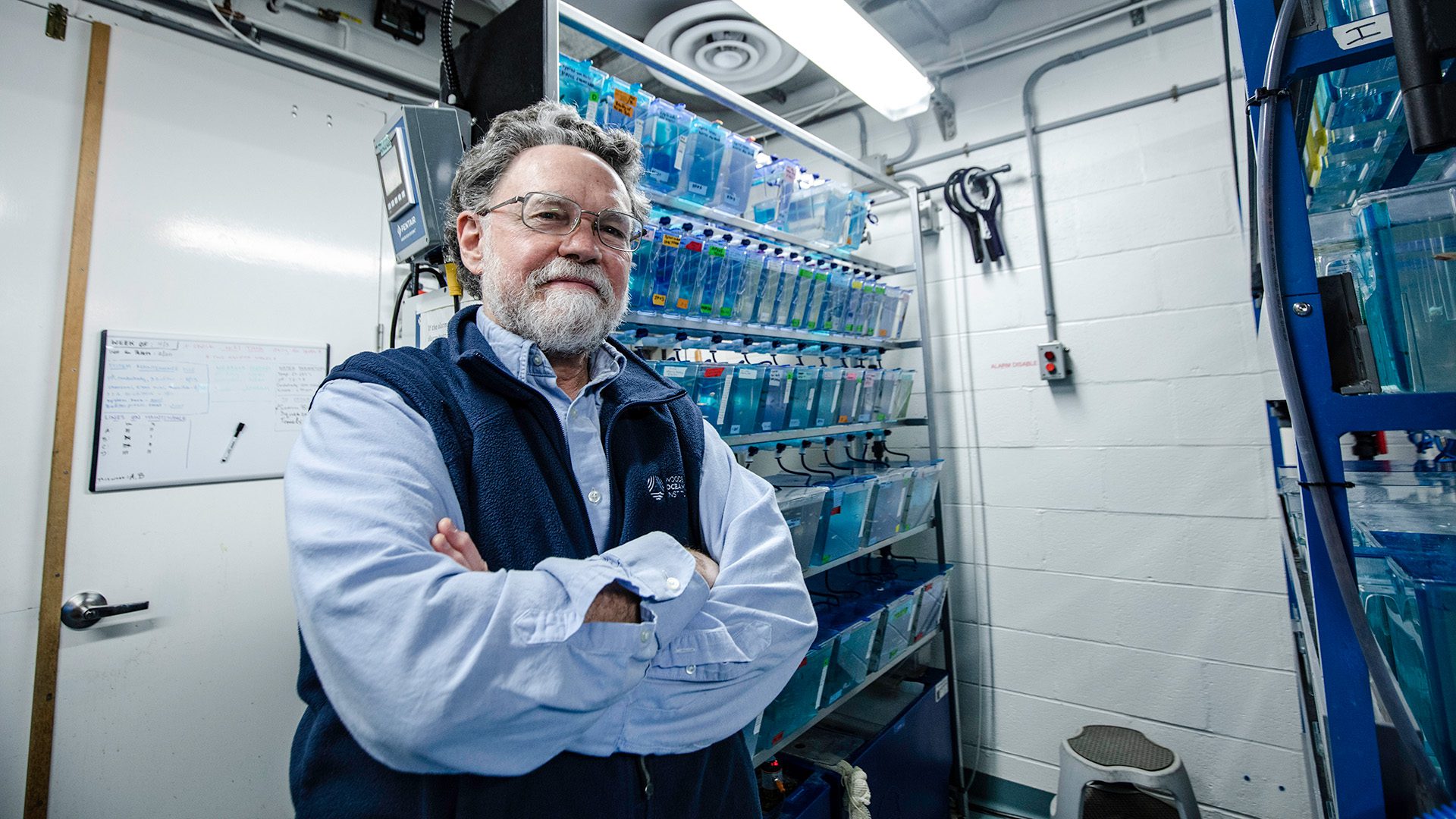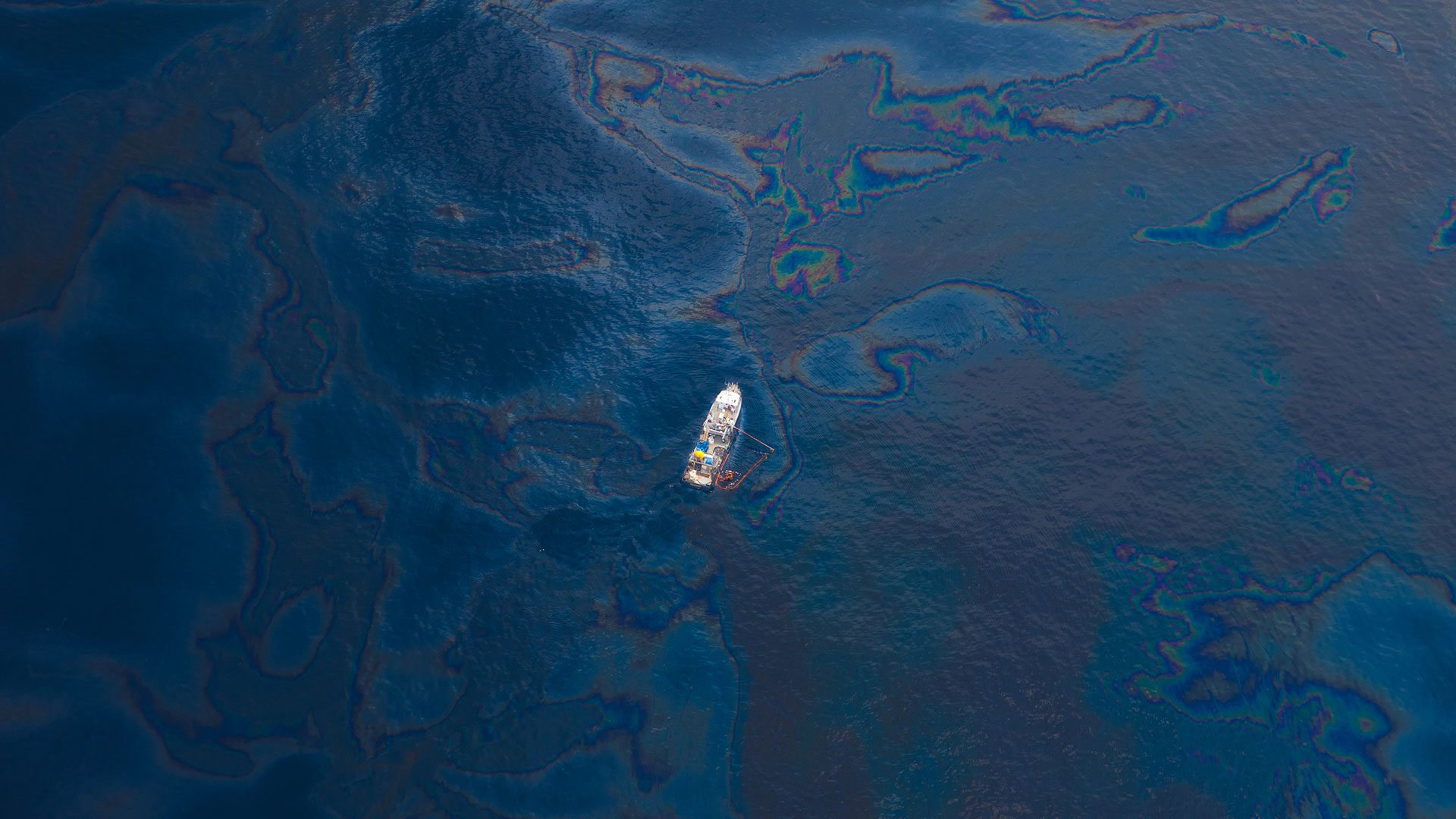Experts Explore the Ocean-Human Health Link

Estimated reading time: 3 minutes
 This article printed in Oceanus Fall 2020
This article printed in Oceanus Fall 2020

Eleonora Van Sitteren
Guest Student, Lindell Lab
I work with the Lindell Lab group at WHOI on a selective breeding program with sugar kelps. These can be used as a carbon-neutral, sometimes even carbon-negative, highly nutritious food source, as well as a promising biofuel.
To make the farming process more efficient, the lab is tracking the genetics of the algae. But to farm kelp, you need something for it to attach to and grow on. However, not all life stages of kelp are able to adhere to these substrates as others can. So, my job is to figure out a better binder (glues, basically) that will help algae attach and allow them to grow.
Even if we fish more of the already depleted wild stocks out there, we will still need more food in the future to feed the growing global population. A lot of ocean space along the coast can be used to grow algae, which not only provides an important source of food but also improves the water quality and helps reduce the production of global carbon dioxide.
Interviewed by Daniel Hentz

Nadja Brun
Environmental Toxicologist, Postdoc, Stegeman Lab
In my research, I study how exposures to chemical pollutants called polychlorinated biphenyls, or PCBs, induce neurological disease. We just add PCBs to water in experiments with zebrafish. We can look at how these toxicants influence the development of the nervous system and fish behavior.
Many people don’t make the connection between studying fish and biomedical research, but to me, it’s obvious. A few years ago, scientists sequenced the whole genome of zebrafish. That’s when we realized how similar they are to humans. The researched showed that we share more than 80% of genes involved with diseases. And zebrafish have a major advantage: They develop externally. That means we can observe how they grow from a single cell to a fish that can hunt and avoid predators in just five days. And because the larvae are transparent, it’s easy to image cells and organs. We can make nerve cells, for example, fluorescent and examine whether they develop properly under the microscope.
Interviewed by Lexi Krupp

Neel Aluru
Associate Scientist, Biology
I study how juvenile organisms' exposure to environmental stressors–things like manmade pollutants or toxins– can impact the risks of developing adverse health conditions as adults. In particular, I look at the packaging of DNA in the nucleus—a process known as epigenetics—and how it is involved in mediating these toxic effects. If you think of DNA like a piano, the pianist is the epigenetic process that determines which notes are played, or how genes are expressed. While epigenetic changes are part of normal development, environmental factors also have the power to impair an organism’s overall health. In humans, these variations have been linked to illnesses, such as Alzheimer’s disease and other neurodegenerative disorders.
We use zebrafish as a model because of its short generation time, which allows us to study the long-term and multi-generational effects of toxins within shorter timeframes. Understanding the effects and processes by which toxins alter their health is critical to determining the risks posed by environmental chemicals to human health.
Interviewed by Lexi Krupp

Svenja Ryan
Physical Oceanographer, Postdoc, Ummenhofer Lab
As a physical oceanographer, I often have people ask me, “So how does your research affect my life right now?” Often, you can’t say anything other than, “It might affect your life in 50-100 years.” But with marine heatwaves, the current subject of my research at WHOI, you can draw more immediate connections to society.
Similar to atmospheric heatwaves, these are discrete events where regions of the ocean experience above-average temperatures (sometimes lasting years). A few of these events have had drastic effects on the ecosystems that give us food and support our economies. Just off our doorstep in New England in 2012, there was an unprecedented marine heatwave that led to massive problems in the local lobster fishery. Because temperatures started to warm up very early in the season, the lobster landing came unexpectedly. The supply chain couldn’t handle it, and the price of lobster dropped precipitously, throwing the whole economy for a loop.
In a way, these phenomena give us a glimpse at a more permanent future if we don’t manage the effects of climate change.
Interviewed by Daniel Hentz



